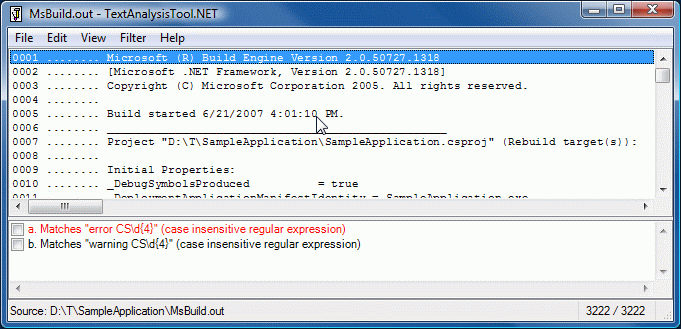An easy way to keep your windows where you want them [Releasing WindowPlacementTool with source code!]
I wrote WindowPlacementTool in December of 2000 to solve a problem I had after beginning to use Terminal Services/Remote Desktop regularly. I made WindowPlacementTool available internally in 2001. Last week someone asked about getting access the source code to make some customizations and I figured I'd post the tool and its source here for anyone to use.
Download WindowPlacementTool and its source code by clicking here.
Details:
Summary
=======
If you're picky about the layout of the windows on your desktop or if you
connect to your machine with Terminal Services at differing resolutions, you're
probably annoyed by having to re-layout your windows on a regular basis. It
seems like something (or someone!) is always coming along and messing with your
layout. But now that's a problem of the past; WindowPlacementTool can do all
the work for you! Just run it once to capture the layout you like, and then
run it again whenever you need to restore that layout. And because you can
save multiple layouts, switching resolutions is a breeze. Yep, it's that easy!
Command Line Help
=================
WindowPlacementTool
Copyright (c) 2000 by David Anson (DavidAns@Microsoft.com)
[-h | -help | -?]
This help screen
[-c | -capture] [Capture_file_name.txt]
Capture the current window positions to a file (or standard output if
no file name is given)
[Restore_file_name_1.txt] [Restore_file_name_2.txt] ...
Restore the window positions from the data previously captured in the
specified file(s) (or standard input if no file name is given)
Example Setup
=============
[Layout your windows however you'd like them]
[Capture the current layout to a file]
C:\Temp>WindowPlacementTool.exe -c 800x600.txt
[Optional: Edit the file to remove any programs you don't care about]
C:\Temp>notepad 800x600.txt
[Optional: Create a shortcut on your desktop for easy access to this layout]
[Here, the shortcut would run "WindowPlacementTool.exe C:\Temp\800x600.txt"]
Example Use
===========
[Run the shortcut you created above or run WindowPlacementTool manually]
C:\Temp>WindowPlacementTool.exe 800x600.txt
Notes
=====
* WindowPlacementTool saves the RESTORED locations of windows. If a window is
currently maximized or minimized, its restored location will be adjusted, but
the window will not be un-maximized or un-minimized by WindowPlacementTool.
* I have placed a shortcut to a layout for each resolution I use on my taskbar
so that it's always available when I need it.
Additional notes:
- When restoring window positions, the window class name must match the saved value exactly, but the window title comparison is just a substring match. This makes it easy to target windows that change their window title depending on the current document. (Example: "Untitled - Notepad" and "File.txt - Notepad" will both match the window title string "Notepad".)
- The code for WindowPlacementTool was written many years ago and may not follow conventional coding standards. Feel free to reformat it in your favorite editor. :)
- I've made only the necessary modifications to get the original code compiling successfully under Visual Studio 2005 SP1. I specifically did NOT spend time resolving the four new compiler warnings.
- While I've always tried to take security and correctness seriously, the original code was written well before security was as big an issue as it is today. Recent modifications to Microsoft's CRT have deprecated some functions in favor of safer alternatives. This is the source of 3 of the 4 compiler warnings; read more about security enhancements in the CRT for additional details. The 4th compiler warning is due to improved CRT warnings associated with the increasing popularity of 64-bit computing (specifically compiler warning C4267). My code is typically error and warning free at warning level 4, but it's hard to be immune to future enhancements to the compiler/CRT. :)
- Parts of the original code (ASSERT, VERIFY, ARRAY_LENGTH, WideString/AnsiString, _sntprintfz) used a helper library I wrote - I've pulled the relevant bits of that library into the main CPP file to remove the external dependency. Strsafe.h wasn't around at the time, but some of the code in this helper library of mine was already doing similar things. For example, the *z string functions improved upon the * versions by preventing buffer overflows and guaranteeing null-termination of the target string (i.e., strcpyz vs. strcpy).
- While the source code compiles under VS 2005, the EXE included in the ZIP archive contains the bits as they were compiled back in 2000 with whatever compiler was current at the time.
WindowPlacementTool has served me well over the years - I hope others find it useful and/or educational!
